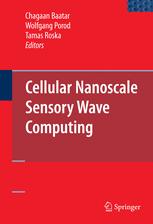

Most ebook files are in PDF format, so you can easily read them using various software such as Foxit Reader or directly on the Google Chrome browser.
Some ebook files are released by publishers in other formats such as .awz, .mobi, .epub, .fb2, etc. You may need to install specific software to read these formats on mobile/PC, such as Calibre.
Please read the tutorial at this link: https://ebookbell.com/faq
We offer FREE conversion to the popular formats you request; however, this may take some time. Therefore, right after payment, please email us, and we will try to provide the service as quickly as possible.
For some exceptional file formats or broken links (if any), please refrain from opening any disputes. Instead, email us first, and we will try to assist within a maximum of 6 hours.
EbookBell Team

5.0
88 reviewsIn this book the emerging and converging architecture of morphic cellular wave computers based on the concept of Cellular Neural/Nonlinear Network (CNN) is introduced in a practical way. The authors include descriptions of hardware architectures, software algorithms, as well as a possible new CNN cell based on memristor. The first single chip cellular wave computer- a vision system on a chip (VSoC) is also discussed.
Cellular Nanoscale Sensory Wave Computing is a result of a Multidisciplinary University Research Initiative (MURI) project that has been funded by the Office of Naval Research and completed recently. The results manifest a new way of thinking about sensory computing, as well as it is one of the first successful attempts to bridge the gap between nanoscale (smaller than 100 nm) devices and CMOS integrated circuits with stored programmable algorithms and software on the system level.